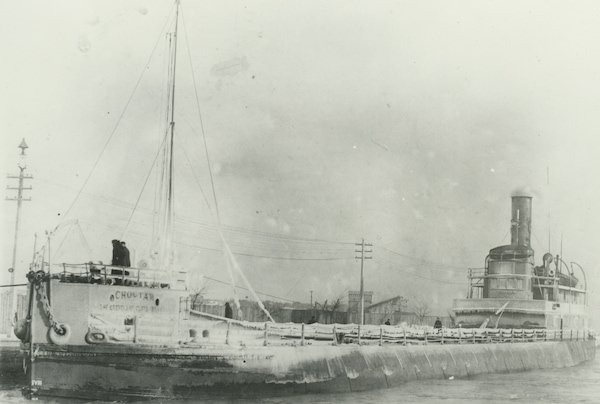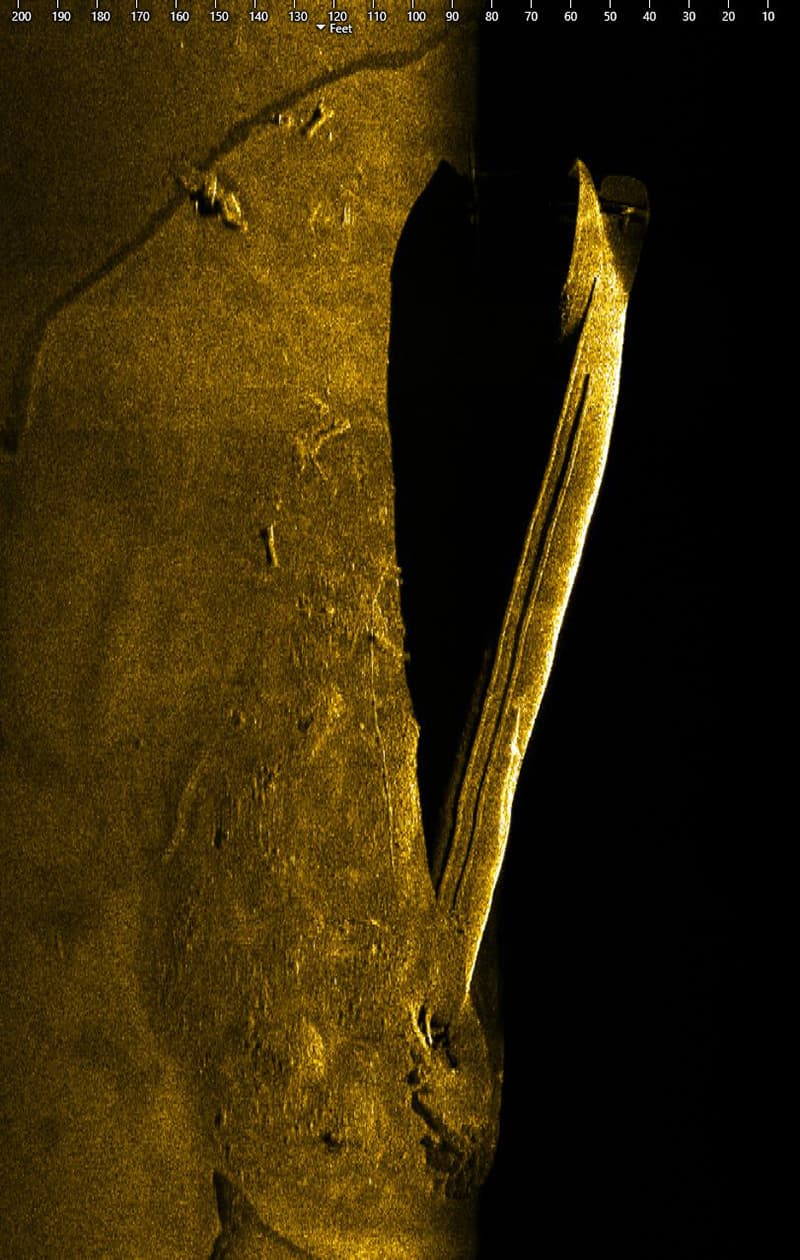Choctaw

Vessel Type: Steel semi-whaleback
GPS Location: N45°32.0563' W83°30.55594'
Depth: 300 feet
Wreck Length: 267 Feet
Beam: 38 Feet
Gross Tonnage: 1,574
Cargo: Coal
Launched: 1892 by Cleveland Ship Building Company, Ohio
Wrecked: July 12, 1915
Description: At the close of the Civil War, iron and steel ships began to dominate the shipbuilding trade, ultimately replacing the traditional wooden hulls of America's merchant fleets. The ship-building city of Cleveland, Ohio, with abundant coal, iron, and capital, naturally turned to steel and the innovative vessel designs it made possible. Soon, shipyards were producing larger and more efficient cargo carriers. The straight back or "monitor" design, a direct descendant of the iconic whaleback design, appeared in 1892.
This design, produced by the Cleveland Ship Building Company, had a conventional bow, but the ship's metal sides slanted outward from the main deck to the waterline at almost a 45 degree angle. The hull resembled later submarines. All cabins were located at the stern, and the smoke stack was straight up and down. The "monitor" never fully developed as a ship class and only three were built: Andaste, Choctaw, and Yuma. Choctaw was 266.9 feet in length, with a beam of 38.1 feet and a 17.9 foot depth of hold. The ship registered 1,573 gross tons, with a capacity of 3,050 tons. It was powered by a 900-horsepower triple expansion engine and two Scotch boilers.
Like many Great Lakes ships, Choctaw was not immune to mishaps. In April 1893, an engine explosion killed two crew members. The vessel sank at Sault Ste. Marie in a collision with the steamer Waldo in May 1896. A few years later, in May 1900, Choctaw grounded near Point au Pins, and in April 1902, Choctaw struck a rock at Marquette and partly sank after getting inside the harbor.
The ship's fatal blow came on July 12, 1915, off Presque Isle. Up-bound in a dense fog with a cargo of coal, Choctaw was hit between No. 1 and No. 2 hatches by Canadian Steamship Company freighter Wahcondah. Although the ship sank in only seven minutes, Captain Charles A. Fox and his crew of 21 men were all rescued and taken aboard Wahcondah.
Learn about the discovery in the web story, "History Meets Technology"
Great Lakes Maritime Collection digital archive: http://greatlakeships.org/2892499/data?n=1


